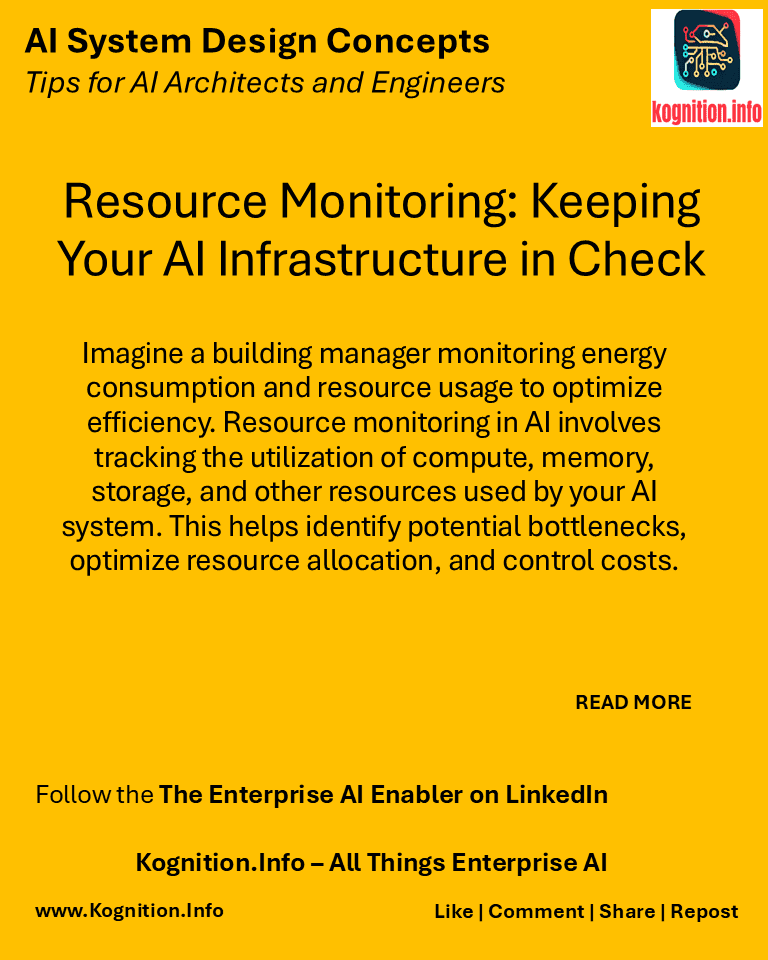
Imagine a building manager monitoring energy consumption and resource usage to optimize efficiency. Resource monitoring in AI involves tracking the utilization of compute, memory, storage, and other resources used by your AI system. This helps identify potential bottlenecks, optimize resource allocation, and control costs.
Use cases:
- Tracking GPU utilization: Monitoring the usage of GPUs to ensure they are being used effectively for model training and inference.
- Optimizing memory allocation: Analyzing memory consumption to prevent memory leaks and optimize performance.
- Managing storage costs: Tracking storage usage to identify opportunities for cost optimization and prevent storage capacity issues.
How?
- Choose monitoring tools: Select tools like Prometheus, Grafana, or cloud-based solutions like AWS CloudWatch.
- Instrument your code: Add code to track resource utilization within your AI application.
- Visualize and analyze data: Use dashboards and visualizations to monitor resource usage and identify trends.
- Set up alerts: Configure alerts to notify you of unusual resource consumption or potential bottlenecks.
Benefits:
- Improved efficiency: Optimize resource utilization and reduce costs.
- Enhanced performance: Identify and address resource bottlenecks that may be impacting performance.
- Proactive capacity planning: Anticipate future resource needs and scale infrastructure accordingly.
Potential pitfalls:
- Overwhelming data: Collecting too much data can make it difficult to identify meaningful insights.
- Alert fatigue: Too many alerts can lead to alert fatigue and important issues being missed.
- Ignoring trends: Failing to analyze trends in resource usage can lead to missed opportunities for optimization.
